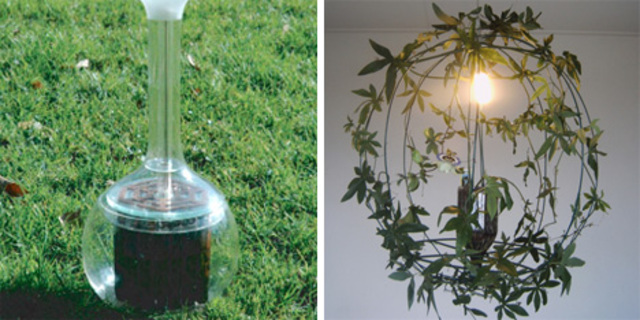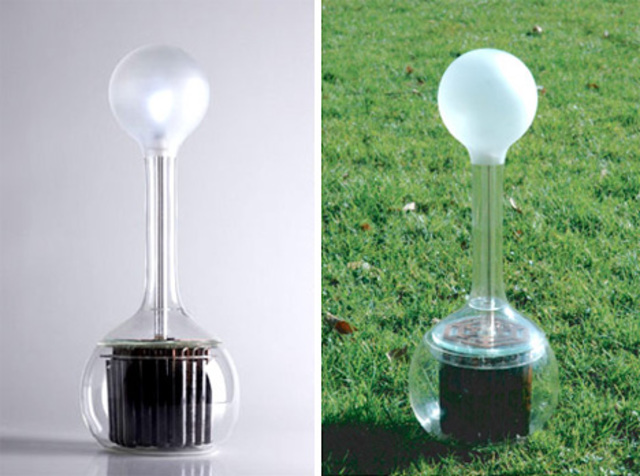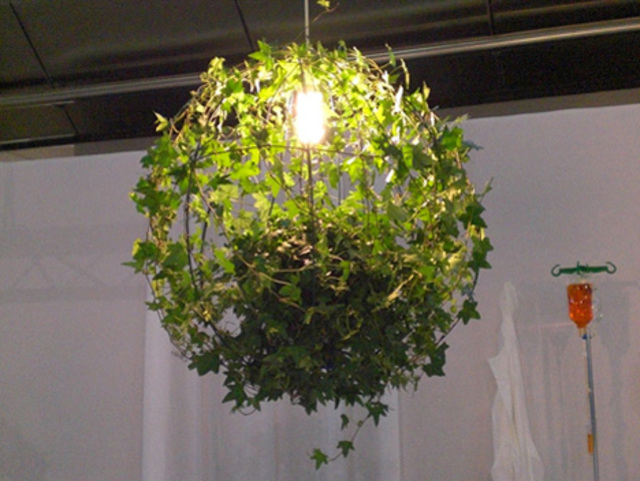2 Plant- and Soil-Themed Lamps

You might not think that plants and electricity are very closely related, but these two lamps use the power of nature to provide illumination. One uses soil to light a lamp and the other uses a plant to control the amount of light that is sent out into the room – but both meld the natural and the man-made in an elegant manner.

The Soil Lamp from designer Mareike Staps uses the natural conductive capacity of soil to light up an LED bulb. The lamp is quite simple, having a transparent body that lets you see all of its inner workings. Conductive plates buried in the soil react with water (which you have to add every now and then) to create enough clean, free energy to keep the light burning virtually forever.
“Free and environmentally friendly energy forever and ever. The lamp runs on mud. The metabolism of biological life together with the chemical reaction of copper and zinc produce enough electricity to keep a LED lamp burning. The mud is enclosed in various cells. These cells contain copper and zinc that conduct the electricity. The more cells there are, the more electricity they generate. This technique offers a wealth of possibilities. The only thing that the lamp needs is a splash of water every now and then.”

The Plamp from Dutch designer Twan Verdonck is half plant, half lamp. A small container of soil is suspended within a wire frame, while a light bulb pokes through the top of the frame. A plant grows from the soil and wraps itself around the wire frame. As it grows, it begins to obscure the light. The plant can be trimmed to allow more light through. No matter how much light shines from this lamp, the elegant shapes of the plant leaves provide a lovely natural lamp shade.
From Wired:
“Like something lurking in the background of a scene from Robyn and Rand Miller’s Myst series, these metal lights, snarled up in living greenery, could add a touch of eco-friendly magic to any drab office or study. The makers at Dreamingreen offer the frame, designed by Twan Verdonck, with Hedera, Woodbinue, Grape or Tomato. The plant itself grows from a bottle at the bottom part of the spherical ‘shade,’ and costs €50, shipping included. They also offer it as a DIY kit for half-price, and the make-it-yourself instructions for two bob.”




